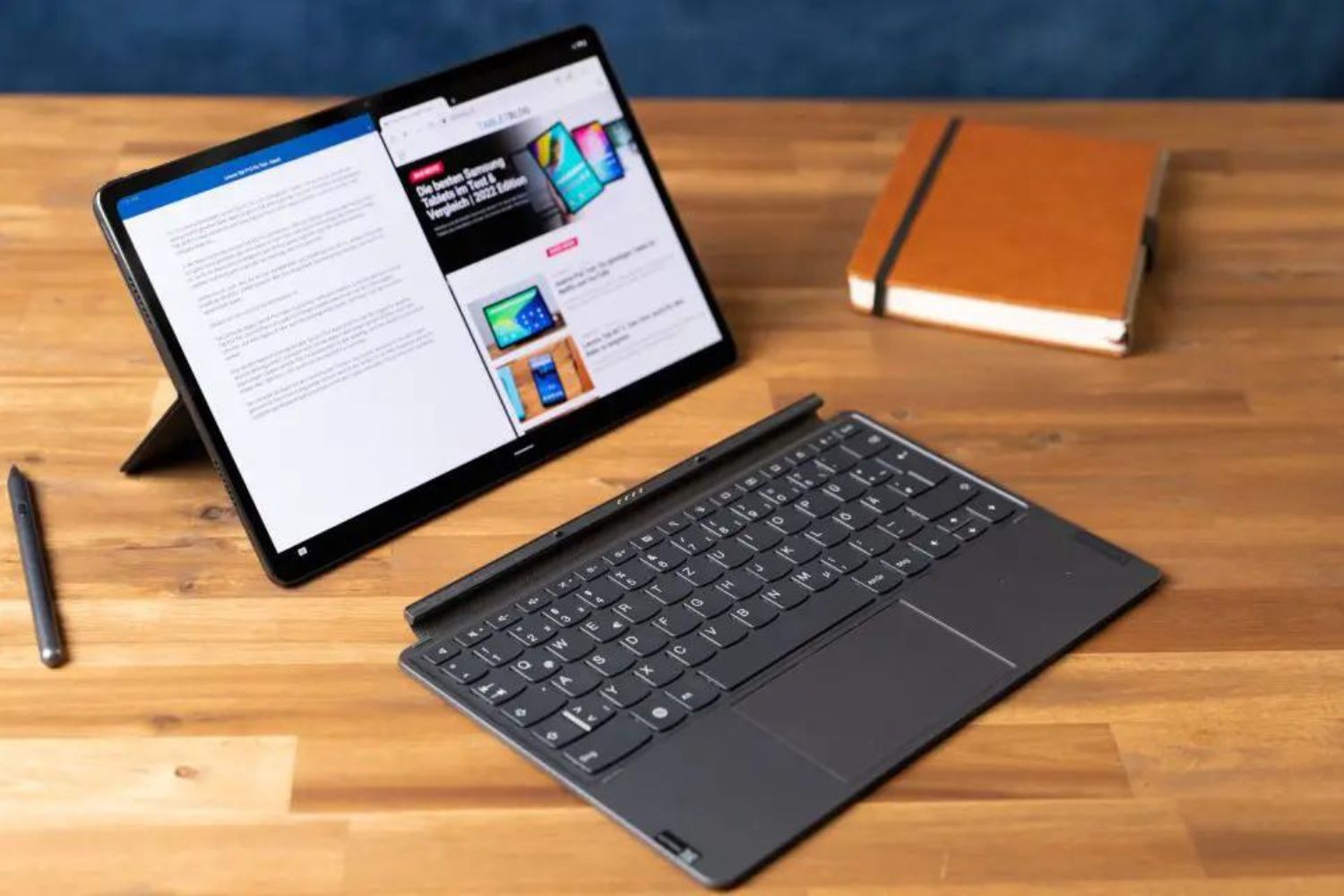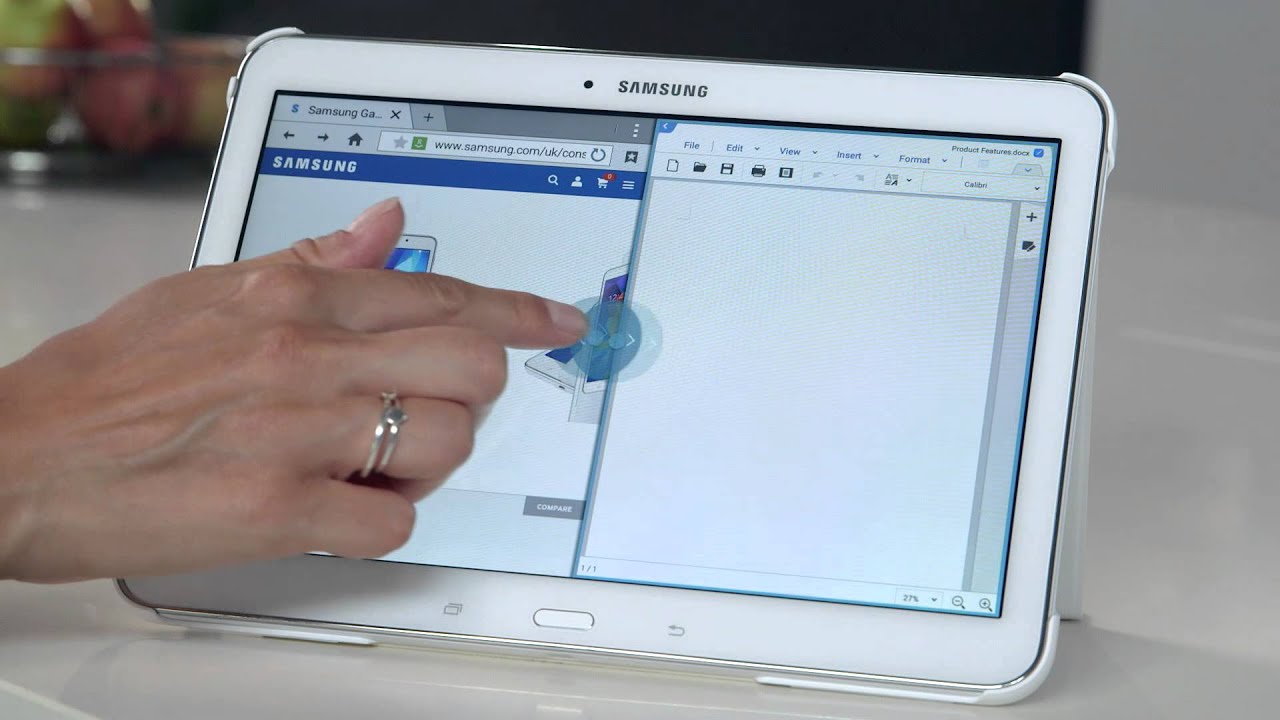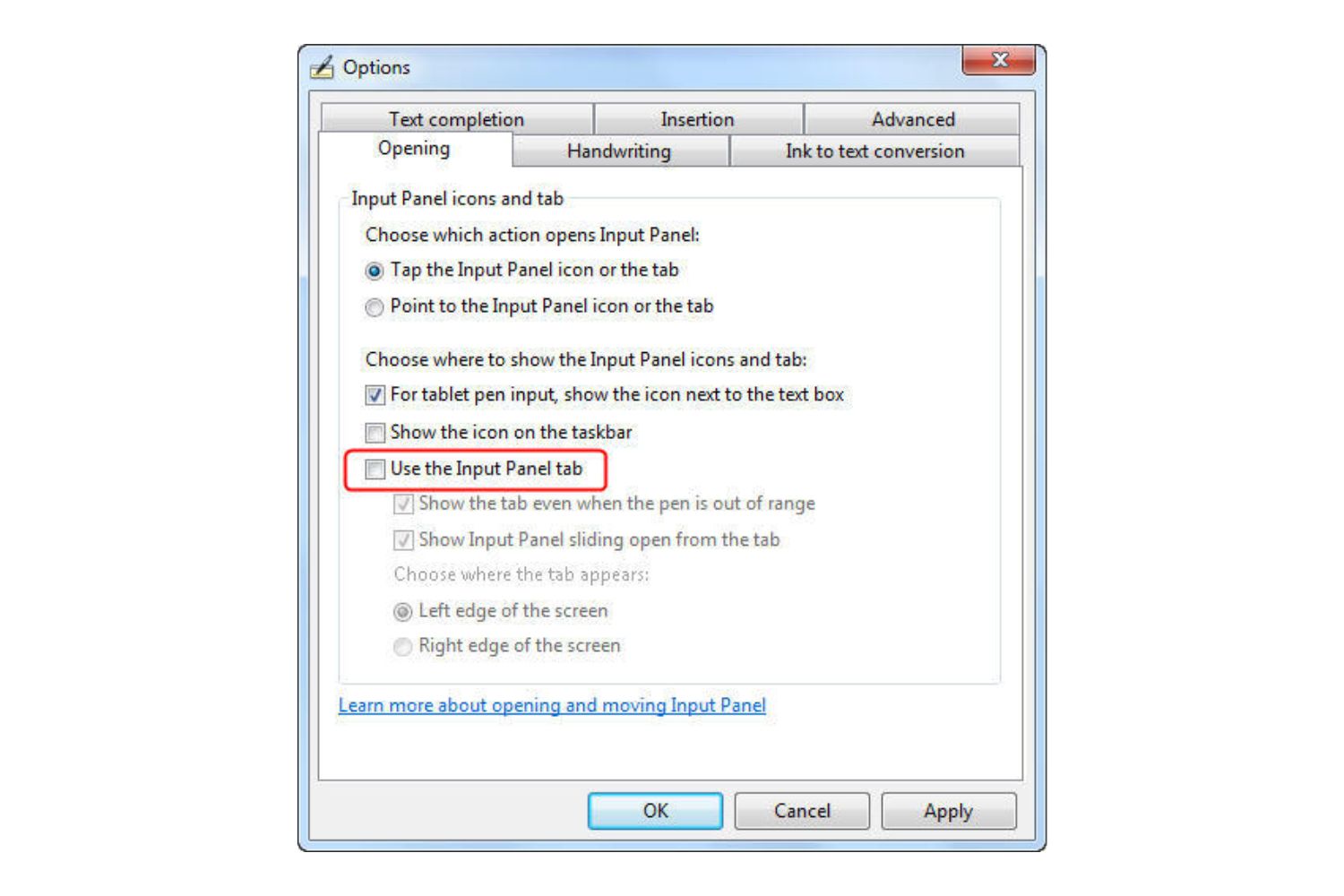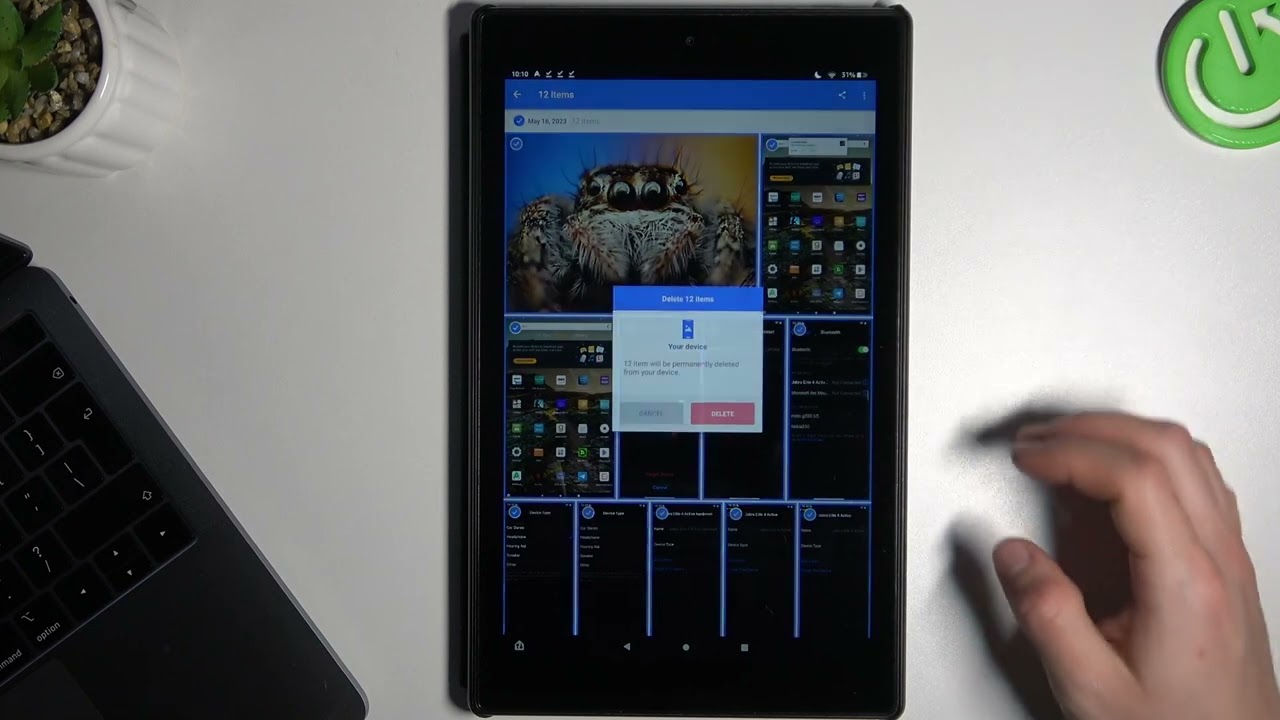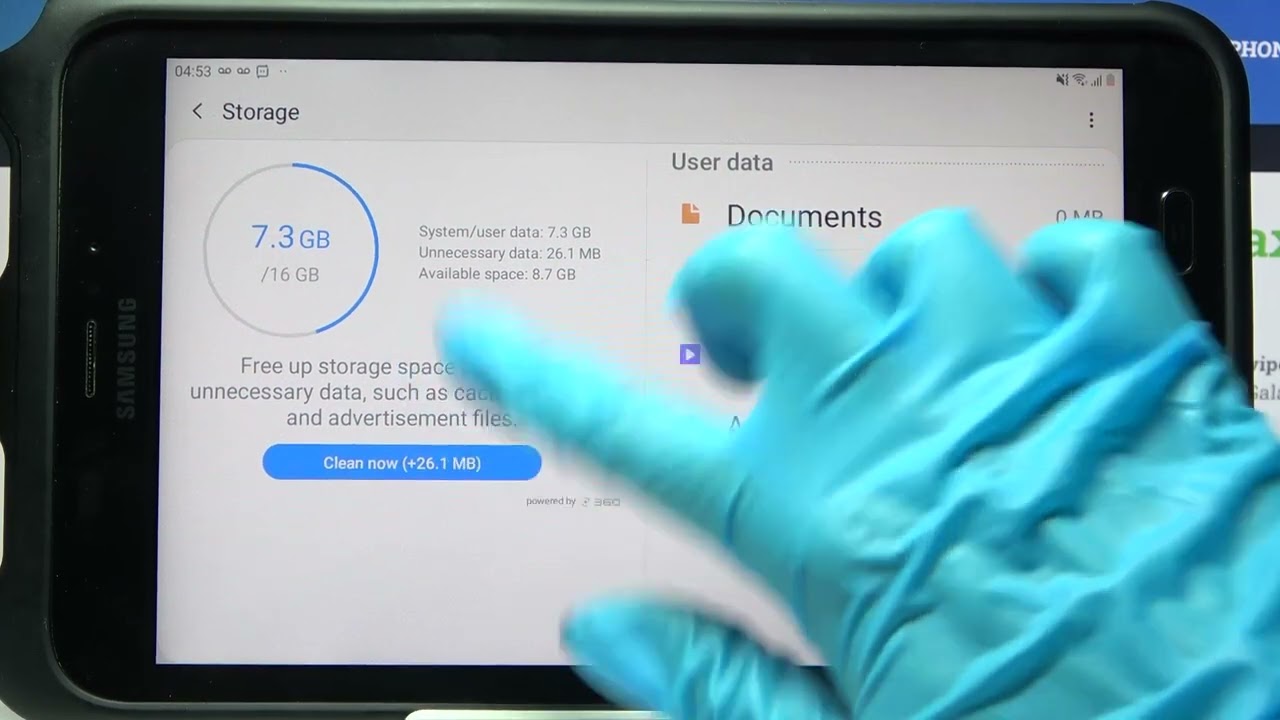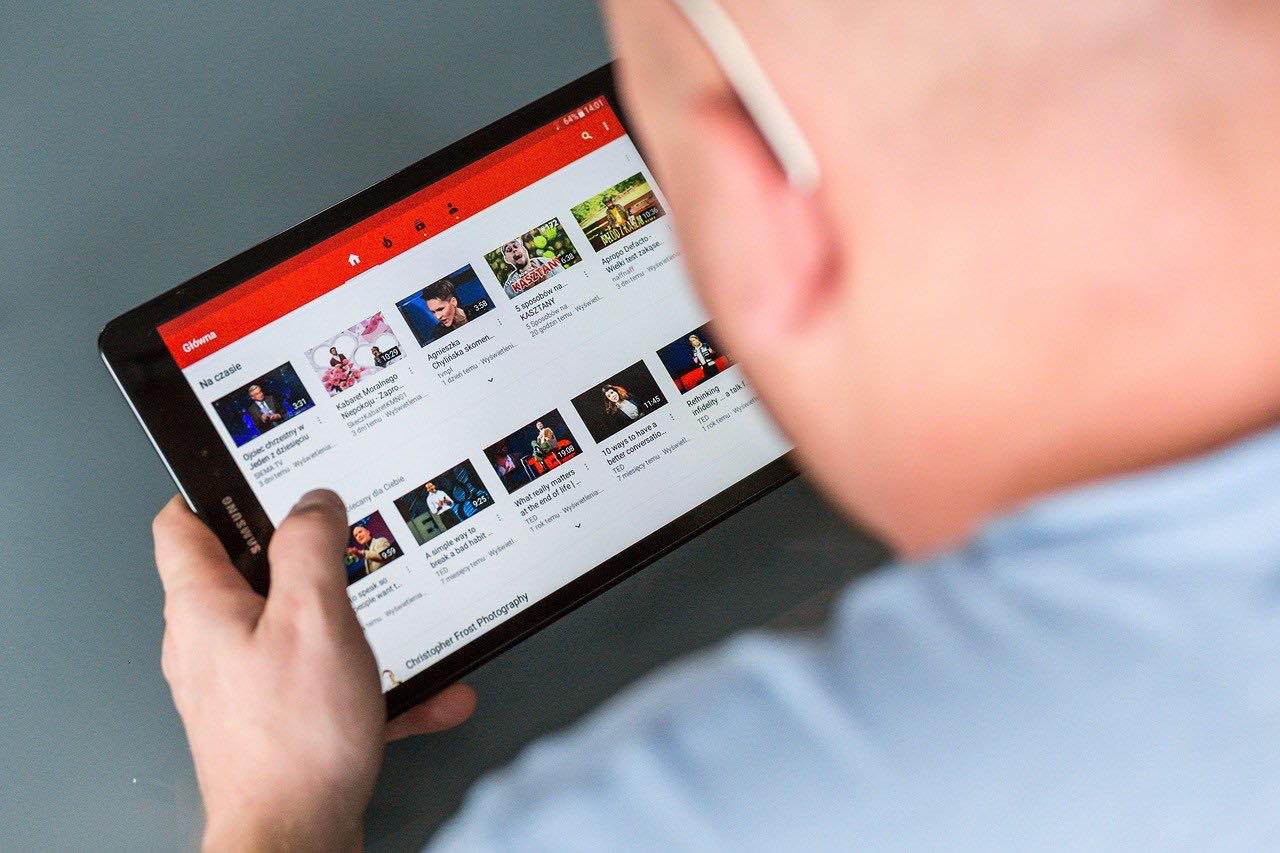Introduction
Welcome to the world of Samsung tablets, where productivity meets convenience. As a user, you may find yourself encountering an on-screen keyboard that occupies valuable screen space when you don’t need it. Whether you’re trying to optimize your browsing experience or simply enjoying a fullscreen app or game, getting rid of the keyboard can greatly enhance your tablet usage.
In this article, we will explore various methods to help you remove the keyboard on your Samsung tablet. Whether you prefer using built-in features or third-party apps, we’ve got you covered. So, let’s dive in and discover the different ways to reclaim your screen space and improve your overall tablet experience.
Before we begin, it’s important to note that the steps may vary slightly depending on your specific Samsung tablet model and the version of the operating system you are running. However, the general concepts and methods discussed here should apply to most Samsung tablets.
Ready to take back control of your screen? Let’s get started!
Method 1: Using the Back Button
If you want a quick and simple way to get rid of the keyboard on your Samsung tablet, using the back button is the way to go. This method works especially well if you’re in an app or a text input field and want to close the keyboard without navigating away from your current screen.
To remove the keyboard using the back button, follow these steps:
- When the keyboard is visible on your screen, locate the back button at the bottom of your tablet.
- Tap the back button once. This will trigger the keyboard to disappear and return you to your previous screen or app.
That’s it! The keyboard should now be closed, giving you more space to view and interact with your content. It’s a straightforward method that requires no additional settings or configurations.
Note that this method may not work in all situations, especially if the app or website you’re using has overridden the default behavior of the back button. In such cases, you may need to explore alternative methods.
Now that you know how to use the back button to remove the keyboard on your Samsung tablet, let’s explore another method that involves your tablet’s navigation bar.
Method 2: Using the Navigation Bar
Another convenient way to get rid of the keyboard on your Samsung tablet is by using the navigation bar. This method is particularly useful when you want to close the keyboard without leaving the current app or screen.
To remove the keyboard using the navigation bar, follow these steps:
- Look for the home button on the navigation bar at the bottom of your tablet’s screen.
- Swipe up from the bottom of the screen, starting from the home button, and continue the swipe about halfway up the screen.
By swiping up from the home button, you are triggering the “Hide Keyboard” gesture, which causes the keyboard to disappear from the screen.
Once you perform the swipe, the keyboard will be hidden, allowing you to fully utilize the screen space for other activities, such as reading, browsing, or gaming. This method is quick and easy, giving you immediate access to your content without any distractions.
Keep in mind that the availability of the navigation bar and its appearance may vary depending on the tablet model and the version of the operating system. Some Samsung tablets may use gestures, while others may have a physical or virtual navigation bar. Adjust accordingly based on the specifics of your device.
Now that you know how to use the navigation bar to remove the keyboard on your Samsung tablet, let’s explore another method that involves accessing the settings menu.
Method 3: Using the Settings Menu
If the previous methods don’t work for you or if you prefer a more comprehensive approach to managing the keyboard on your Samsung tablet, you can use the settings menu to disable the keyboard altogether.
Here’s how you can remove the keyboard using the settings menu:
- Open the “Settings” app on your Samsung tablet. You can usually find it in the app drawer or by swiping down from the top of the screen and tapping the gear-shaped icon.
- In the settings menu, scroll down and look for the “General Management” section. Tap on it to expand the options.
- Within the “General Management” section, locate and tap on “Language and Input.”
- In the “Language and Input” menu, you will find various keyboard-related settings. Look for the option that says “Manage keyboards” or something similar.
- Tap on “Manage keyboards” to access a list of the available keyboards on your device.
- Find the keyboard that you want to remove and toggle the switch next to it to turn it off.
By disabling the keyboard in the settings menu, you are preventing it from appearing on your screen when you need to input text. This method allows you to customize your keyboard preferences and control which keyboards are active on your tablet.
Keep in mind that disabling a keyboard in the settings menu will affect all apps and text input fields on your device. If you need to use the keyboard again in the future, simply revisit the keyboard settings menu and re-enable the keyboard of your choice.
Now that you know how to remove the keyboard using the settings menu on your Samsung tablet, let’s explore another option: using a third-party keyboard app.
Method 4: Installing a Third-Party Keyboard App
If you’re looking for more flexibility and customization options for your keyboard on a Samsung tablet, installing a third-party keyboard app is worth considering. These apps offer unique features, themes, and improved typing experiences that may better suit your preferences.
Here’s how you can remove the default keyboard and install a third-party keyboard app:
- Open the Google Play Store on your Samsung tablet. You can find it in your app drawer or on your home screen.
- Search for “keyboard app” or browse through the “Productivity” or “Personalization” categories to discover a wide range of available keyboard apps. Some popular options include SwiftKey, Gboard, and Fleksy.
- Select a keyboard app that suits your needs and preferences. Tap on it to access the app page.
- On the app page, tap on the “Install” button to begin the installation process. Follow any additional prompts or permissions that may appear.
- Once the installation is complete, go back to the settings menu on your Samsung tablet.
- Navigate to “Language and Input” or a similar option as mentioned in Method 3.
- Look for “Default keyboard” or a similar setting, and tap on it to select your newly installed third-party keyboard app as the default.
By installing a third-party keyboard app, you not only get to enjoy a different keyboard experience but also have the option to customize the keyboard appearance, enable additional features like swipe typing or emoji suggestions, and gain access to a wider range of language options.
Remember to explore the settings within the third-party keyboard app to further personalize your typing experience and adjust any specific options to your liking.
Now that you know how to remove the default keyboard on your Samsung tablet and install a third-party keyboard app, you have even more control over your typing and can enhance your productivity and enjoyment while using your tablet.
Conclusion
Getting rid of the keyboard on your Samsung tablet can significantly improve your overall tablet experience by providing more screen space and reducing distractions. Whether you prefer a quick gesture using the back button, swiping up from the navigation bar, disabling the keyboard through the settings menu, or installing a third-party keyboard app for enhanced customization, there are various methods to suit your preferences.
The back button and navigation bar methods offer simple and convenient ways to remove the keyboard on the go, without leaving your current app or screen. Alternatively, using the settings menu allows you to disable the keyboard entirely, providing more control over your typing preferences. Finally, installing a third-party keyboard app gives you the freedom to customize your keyboard experience with unique features and themes.
Remember that the steps and options discussed may vary depending on your specific Samsung tablet model and operating system version. It’s always a good practice to explore the settings and options available on your particular device to find the best method for removing the keyboard.
Whether you’re aiming for a distraction-free browsing experience, wanting to enjoy fullscreen apps and games, or simply seeking a more personalized and efficient typing experience, you now have the knowledge to remove the keyboard on your Samsung tablet. Take control of your screen space and make the most out of your tablet usage!







